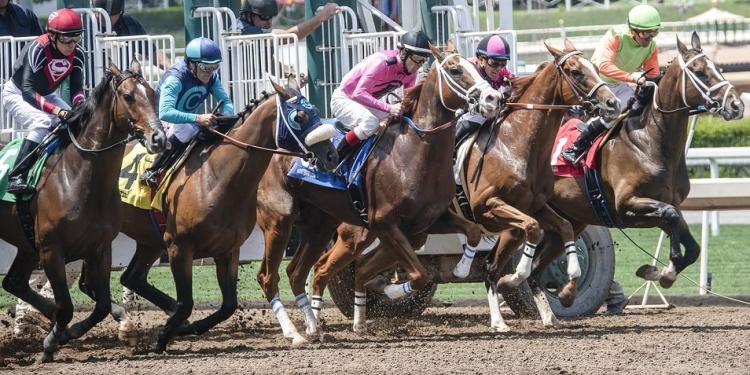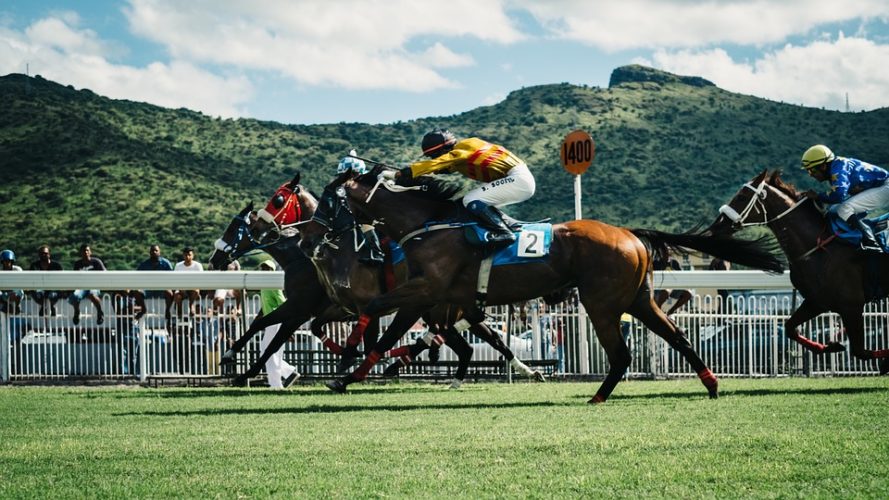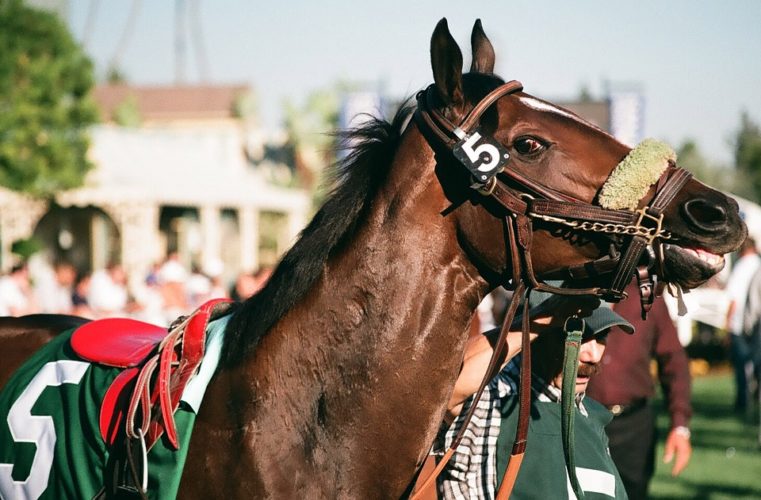Drugs In Horse Racing
Posted: January 10, 2020
Updated: January 16, 2020
-
Just as with human athletes, race horse doping is universal
-
In the US states make different rules
-
You can dope a horse to lose a race

Drugs in horse racing? Really? When you think of drug abuse in sports, it’s easy to focus solely on the steps taken to reduce illegal doping. And that’s an uphill struggle. So imagine the horse racing industry for a moment. It’s still rife with doping abuse.
Introduction: Drugs in Horse Racing
A New York Daily News reporter noted, “The thoroughbred race horse is a genetic mistake. It runs too fast, its frame is too large, and its legs are far too small.” In fact, weighing in at around 1000 lbs, and yet supported on ankles the size of human one’s, race horses run on tracks at over 30 mph. And with a human on the back. And there’s the rub. To operate this massive machine needs more than just a legal intake of grass and oats. Unfortunately, with horse racing being a multi-billion dollar business, there is a large “dark” side. This includes race fixing, injuries, drug abuse and an undignified end in the slaughter house. As you’ll see below, there’s a need for drugs in horse racing. It’s all about being as competitive as the next horse.

Money, Money, Money!
Keep in mind that your average race horse can cost millions of dollars. Many are the property of syndicates which are made up of any number of members. Then there is the whole industry surrounding racing. From the trainers, the jockeys to the veterinarians and handlers. And all sustained by the gamblers, many using these online sports books sites in the US. Coupled with the fact that the horses are constantly moving between races, often in different countries, and it all amounts to big, big money.

Drugs in Horse Racing: Under Pressure
To that end, the pressure for a race horse to succeed it huge. From their early years when they start rigorous training, the horse’s body is constantly being pushed to it’s limits. Unfortunately, in the US, between 700 and 800 racehorses suffer injuries and die each year. The Jockey Club’s Equine Injury Database, said that 10 horses died every week at American racetracks in 2018. For example, at the Santa Anita Park in Arcadia, California, 23 horses died within three months. Because race horses are hugely expensive, they need to be in constant competition, and preferably, winning. Talking of winnings, have a look and win big with Bovada. One Kentucky newspaper reported, “simply sending one to pasture, injured or not, is not an option all owners are willing to consider. Care for a single horse can cost as much as $55,000 per year.”
My Way Or The Highway
Presently there is nothing short of a drugs crisis in the horse racing industry. The use of both illegal and legal doping comes with a multitude of problems, not least for both the horses and their respective riders. There are a number of drugs that allow the horse to up the pain threshold, or mask lameness, thereby risking even greater probability of injury or worse. Things like anabolic steroids and cobalt chloride. Then there are drugs that can allow older horses to run, which can result in injuries that can lead to serious injury and even death. And that includes the riders. Then there are the drugs they give to hide previously administered drugs, so the horse can clear the pre-race inspections. Labs simply cannot keep up with the number of new drugs coming onto the market. Common sense should dictate that if a horse needs any drugs to race, then it shouldn’t be on the racing card. Bovada offer great odds on any racing card.

US vs Rest of the World
Probably the biggest concern is the over prescription of therapeutic medications. Though the problem is world-wide, it’s most pressing in US, as the medication rules there are much more relaxed. For example, the common pain-relief medication phenylbutazone, (commonly known as bute). This has a withdrawal period of seven days in the UK and Ireland, but it can be used up to 24 hours before a race in the US. Another drug is furosemide (Lasix). It has a withdrawal period of two days in UK and Ireland, it can be administered up to four hours before a race in US.
Drugs in Horse Racing: Give Me My Fix
Race horses can become addicted to the drugs their trainers and even veterinarians give them to keep them on the track when they shouldn’t even be racing. “Finding an American racehorse trained on the traditional hay, oats, and water probably would be impossible,” commented one reporter. Many horses receive Lasix (which helps stop bleeding in the lungs), Phenylbutazone (an anti-inflammatory), and Cortiscosteroids (for pain and inflammation). Though these drugs in horse racing are technically legal, they can mask pain or make a horse run faster. In the US, individual states set the regulations, meaning that there are many unscrupulous and unethical trainers moving horses from states to state in search of those with the laxest rules. Just look at what happened with the Triple Crown.

I’m A Loser, Baby
Sometimes, drugs in horse racing are not for the use of winning, but to cause a loss. This favors certain betting patterns. You can check out betting patterns and odds with these online sports books in the US. As recently as October 2018, a favorite, “Ladies First”, gave a positive test result for a beta-blocking drug. This was at the Flame Bathrooms Fillies Handicap at the Newcastle meeting on September 21. It appears that the horse was doped to under-perform after it lost by 22 lengths. Of course then there’s the issue of what happens to a race horse once it’s short career is over. But that’s another sad and depressing story for another day.
A Way Forwards
It’s interesting to note that in spite of all the scientific advancements over the last 50 years, race horses are today having fewer starts and shorter racing careers. There is an increasingly vocal school of thought which suggest that all these drugs are masking faults within the breed itself. To that end, the German horse breeding industry are looking for ways to move forwards without drugs being in use at all. They have in place a system where stallions are declared “approved”, meaning that there were absolutely no drugs administered throughout the horses complete history. Approved horses are eligible for German breeder premiums and other incentives. And the program, now almost 20 years old is now producing some excellent results. So maybe there is hope. But knowing how the US operates, don’t hold your breath.












